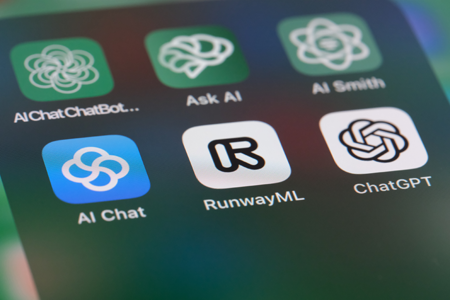How the EU’s Artificial Intelligence Act deals with the protection of intellectual property rights
The European Union’s Artificial Intelligence Act, a new regulation concerning the use of artificial intelligence systems, has been definitively approved and will come into force in a matter of months: here’s a summary of how it deals with the protection of intellectual property rights.
A new regulation of the European Union concerning the use of artificial intelligence, widely known as “Artificial Intelligence Act” (AI Act), was definitively approved on 13 March 2024 (approved text here); it will enter into force gradually between 6 and 36 months after its publication in the Official Journal of the European Union, expected to take place during the summer of 2024. 
Considered the world’s first-ever legal framework on artificial intelligence, the AI Act with two main objectives in mind: to prevent potential risks arising from artificial intelligence systems and from their use, and at the same time to avoid the danger of thwarting, through an excess of regulation, the further development in the European Union of technologies based on artificial intelligence.
So how does the AI Act deal with the protection of intellectual property rights? Here are the essential facts in a nutshell. Our Carlo Lamantea’s recent article on the proposal for the new regulation goes into greater detail.
Respect of EU copyright law
The artificial intelligence systems regulated by the AI Act include so-called “generative” systems (such as ChatGPT) that need be trained using large datasets – meaning content on which third parties often hold copyrights. The use of copyrighted material for instructing such systems has already given rise of several law suits, that have been widely reported on.
Truth be told, the AI Act includes no specific provisions concerning intellectual property rights; The AI Act does, however, state that providers of artificial intelligence models must comply with the European Union’s Copyright Directive No. 790/2019, notably in connection with the “scraping” of databases, which is necessary to train artificial intelligence systems. Although the directive does allow data mining activity without the authorization of right-holders for scientific purposes, extraction activity in general can only take place if use for such purposes has not been expressly reserved by the owners. In both cases, access to the material must have occurred legitimately.
Finally, it should be noted that the AI Act requires artificial intelligence service providers to make available to the public a summary of the material used for model training, drafted according to a precise template developed by the European Artificial Intelligence Office. Such a summary, although not technically detailed, must be complete and take into account the need to protect trade secrets and confidential company information.
AI systems trained outside the EU must comply with EU copyright law
The AI Act’s obligation to respect European Union copyright law extends to any operator introducing an artificial intelligence system into the European Union, regardless of which jurisdiction the system has been trained in. The operator itself will also have to apply a policy concerning the respect of European Union copyright rules.
The aim is to prevent operators from jurisdictions where copyright rules are less strict from enjoying a competitive advantage, and thus to offer a level playing field to all operators within the union’s territory.
Early reactions in Europe
The day after the approval of the AI Act’s definitive version, Europe’s 17 foremost organisations in the creative and cultural sector published a joint declaration recognising that the new regulation is a major step forward, but also calling for mechanisms to apply the new rules effectively and asking for the signatory organisations to be included in drafting the templates that providers of “general purpose” artificial intelligence systems (including generative systems such as ChatGPT) must follow to publish data and information employed for training the systems.
Thanks to Carlo Lamantea for contributing to this news item.
